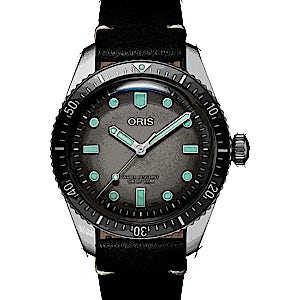The Swiss company Oris proudly refers to the fact that its mechanical watches are equipped with "High Mech", meaning that the timepieces offer the best quality and superior precision. This success story began in 1904, when Paul Cattin and Georges Christian acquired the watch factory Lohner & Co. in Hölstein, which had closed shortly before, and founded their own brand: Oris. They borrowed the name from a small river that meanders through the surroundings of the small town.
In the years that followed, Oris expanded enormously, employing 300 people just seven years later and adding more locations by 1925. Initially specialising in pocket watches, Oris began to expand these with bracelet attachments in 1925, and the first wristwatches were produced. In 1928, a generational change took place: Oscar Herzog took over and led the company through many ups and downs between 1928 and 1971. However, his drive for innovation was thwarted in 1934 when the so-called "Uhrenstatut" (watch statute) was passed - an emergency law to regulate and protect the Swiss watch industry. It prohibited the introduction of new technologies without official authorisation.
In 1966, Oris freed itself from the constraints of the watch statute, and in less than two years, the company presented a technical innovation with the calibre 652 with lever escapement. By the end of the 1960s, Oris was one of the ten largest watch companies in the world. But things continued to change. For example, the so-called quartz crisis initially caused a massive slump in turnover. However, the courageous decision to no longer manufacture quartz movements, but exclusively mechanical movements, enabled Oris to make a comeback. In 1991, for example, the manufacturer presented the extremely successful calibre 581, the most complicated Oris calibre at the time.



